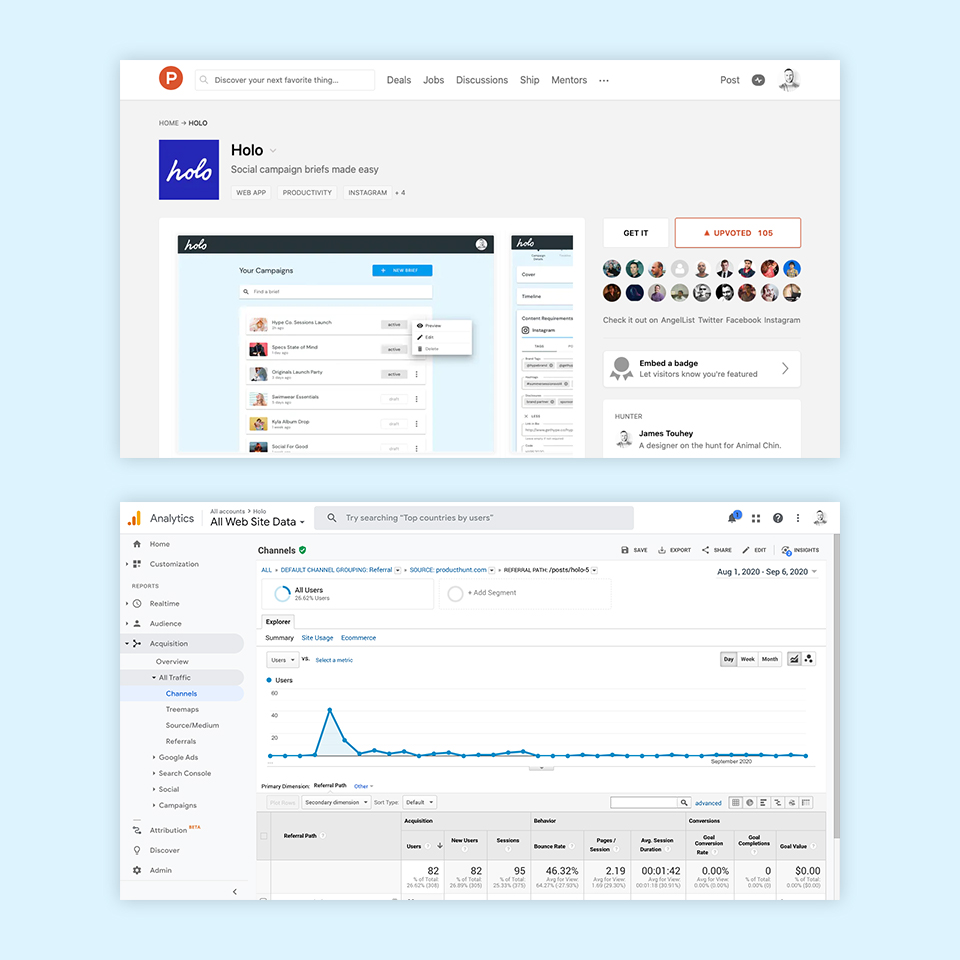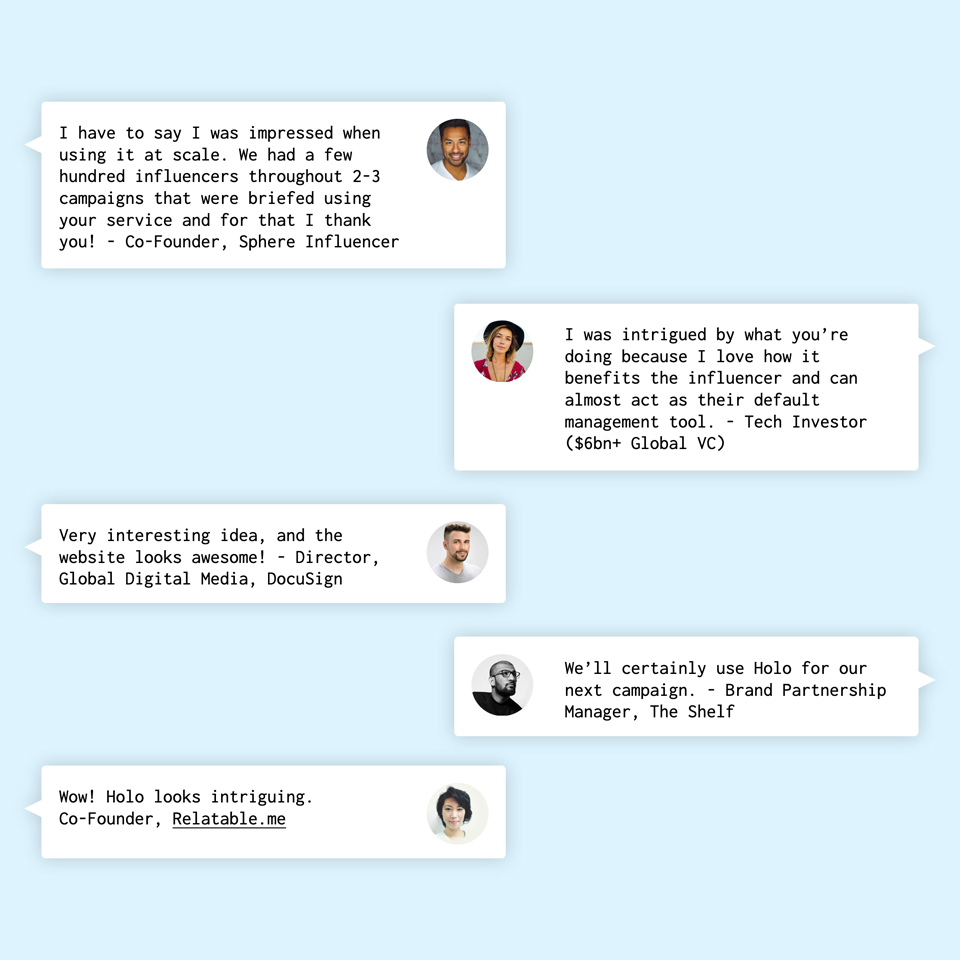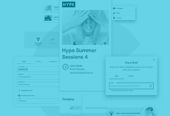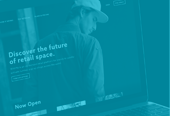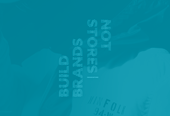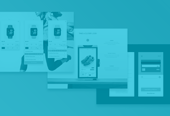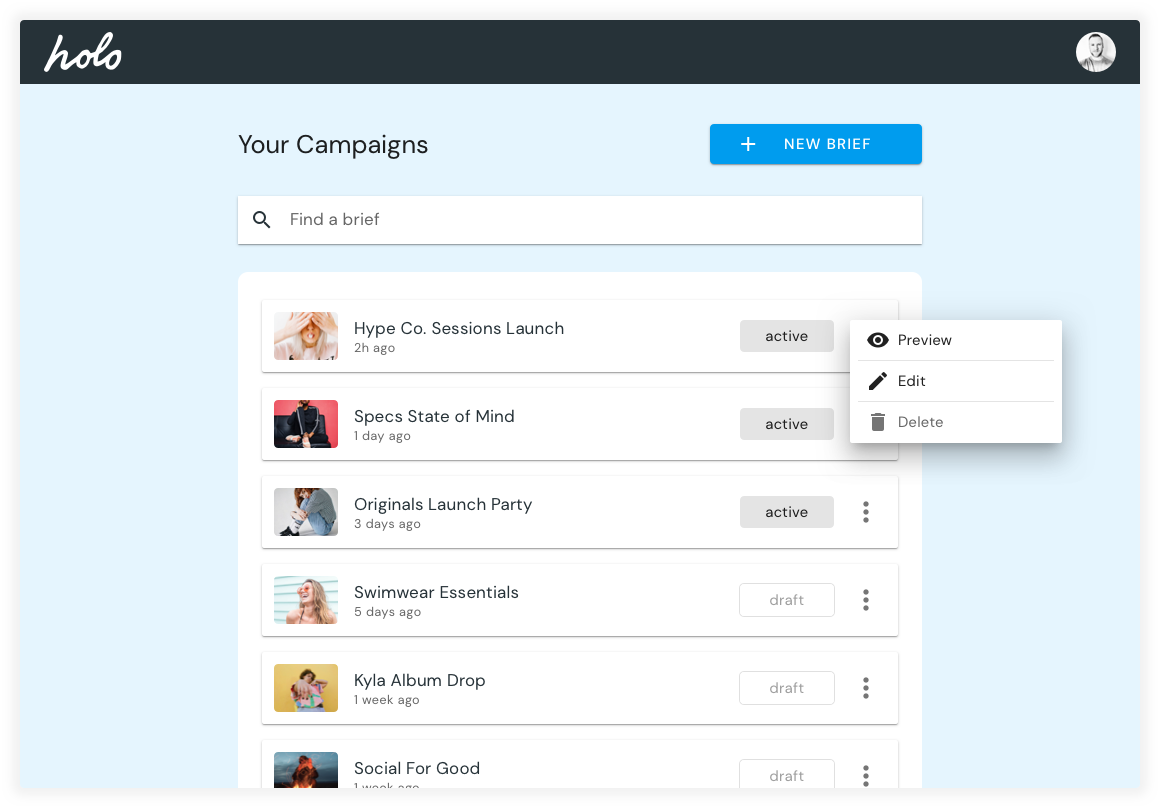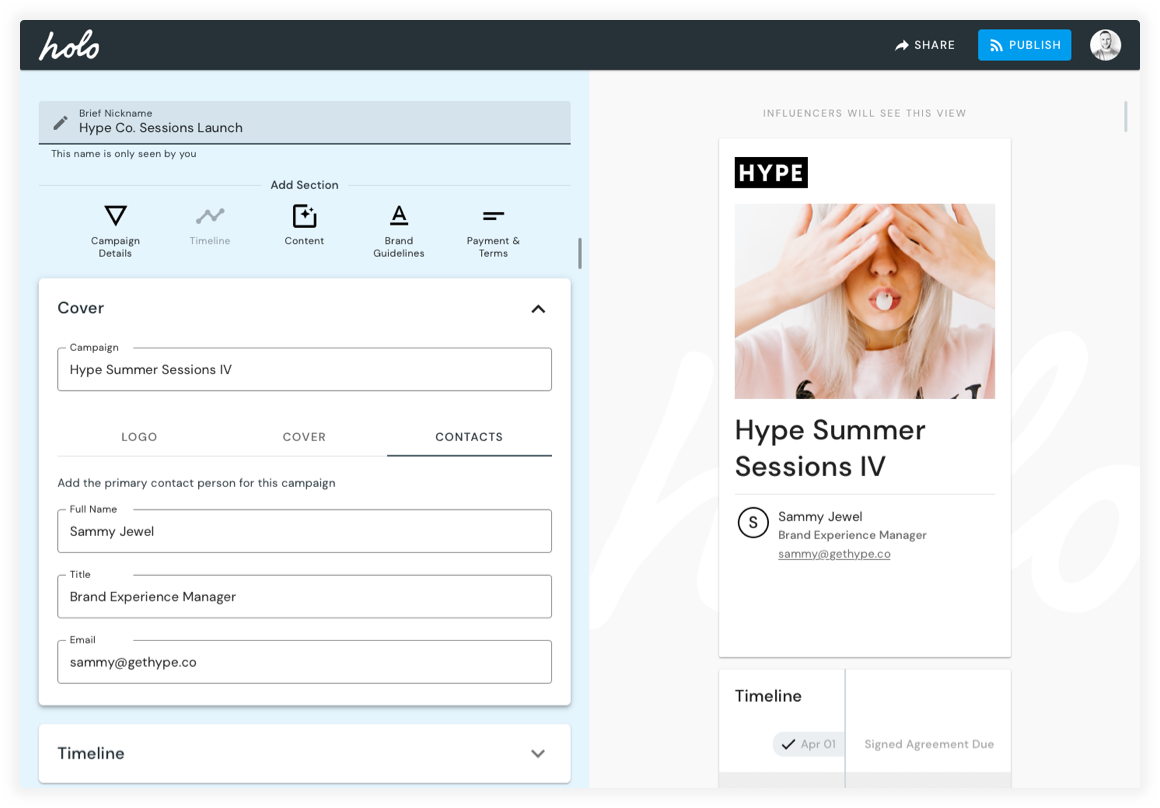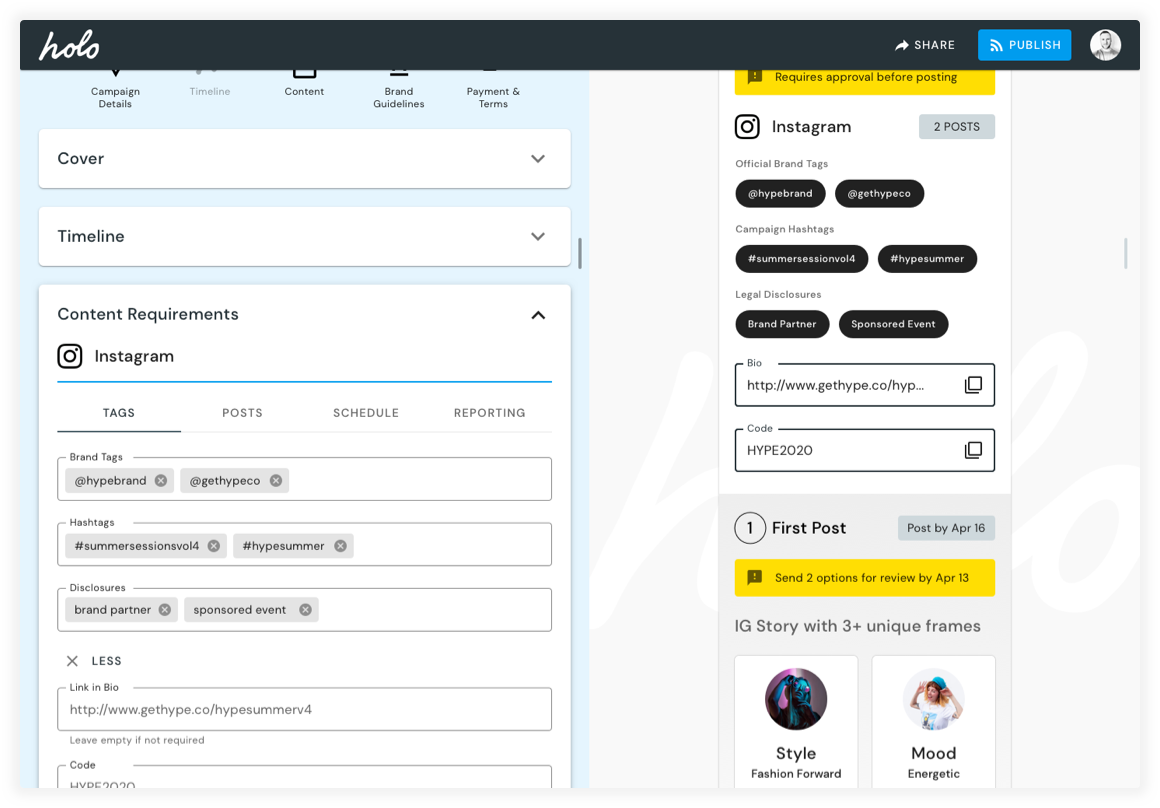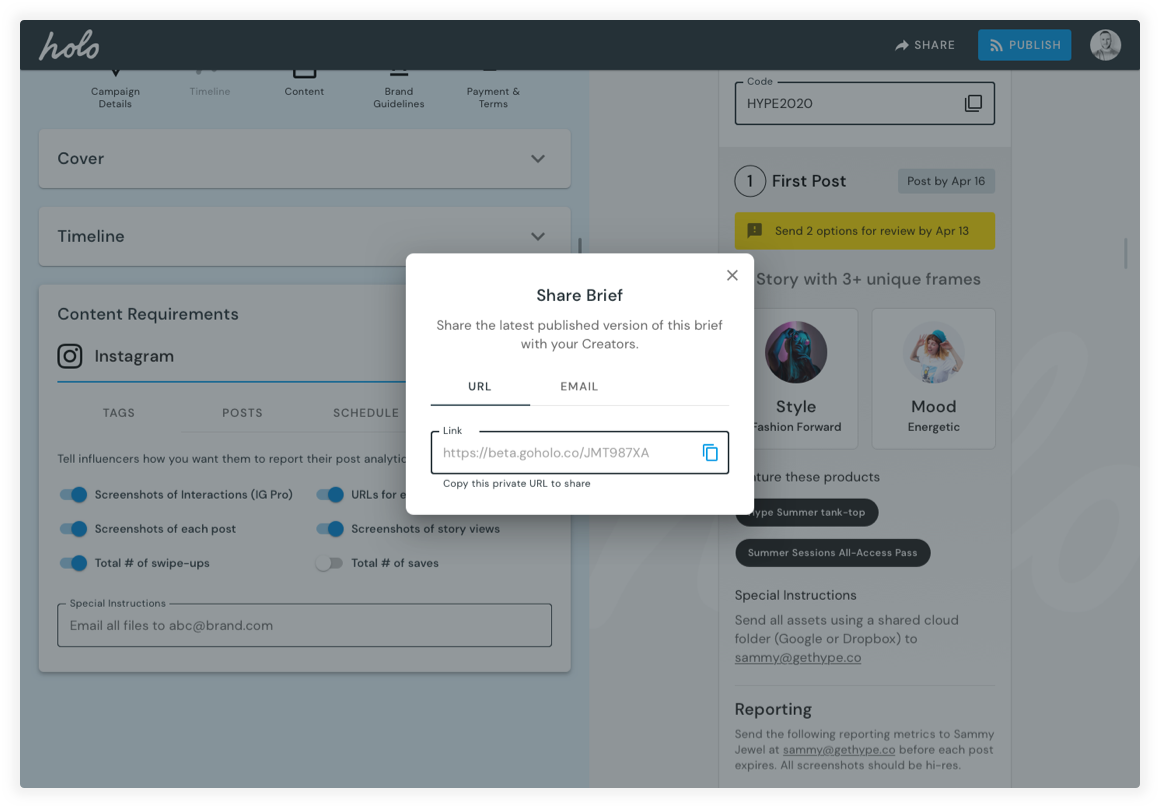Standardizing communication between marketers and influencers
A friend and I discovered that companies wanting influencers to promote their brand all had a different method of delivering their campaign requirements. Using a lean, research-driven approach, we designed a web app that streamlines the process of building comprehensive briefs for marketers and provides an intuitive, mobile-first view for the creator. Industry insiders have noticed the need, and we're continuing to iterate towards product-market fit with user feedback.
View the Live Site


Project Role
Lead Designer
Lead Researcher
Co-Founder
Challenge
Rapidly test a new product concept for the influencer marketing industry based on a hunch.
Outcome
A flexible campaign brief builder for social marketers to communicate campaign requirements to influencers and content creators.
The Opportunity
One day while chatting with a friend, he mentioned his wife had been receiving an influx of proposals from brands and agencies asking her to promote their products and services on her social media channels. She had recently launched a coding book for children, and her Instagram follower count was rising to the micro-influencer level (~20k.)
After some discussion and review of these proposals, we both agreed there might be an opportunity to streamline the proposal process for both brands and influencers. To better understand the problem space, we began with some essential discovery work to learn if anyone could already offer a solution in this area. marketers.
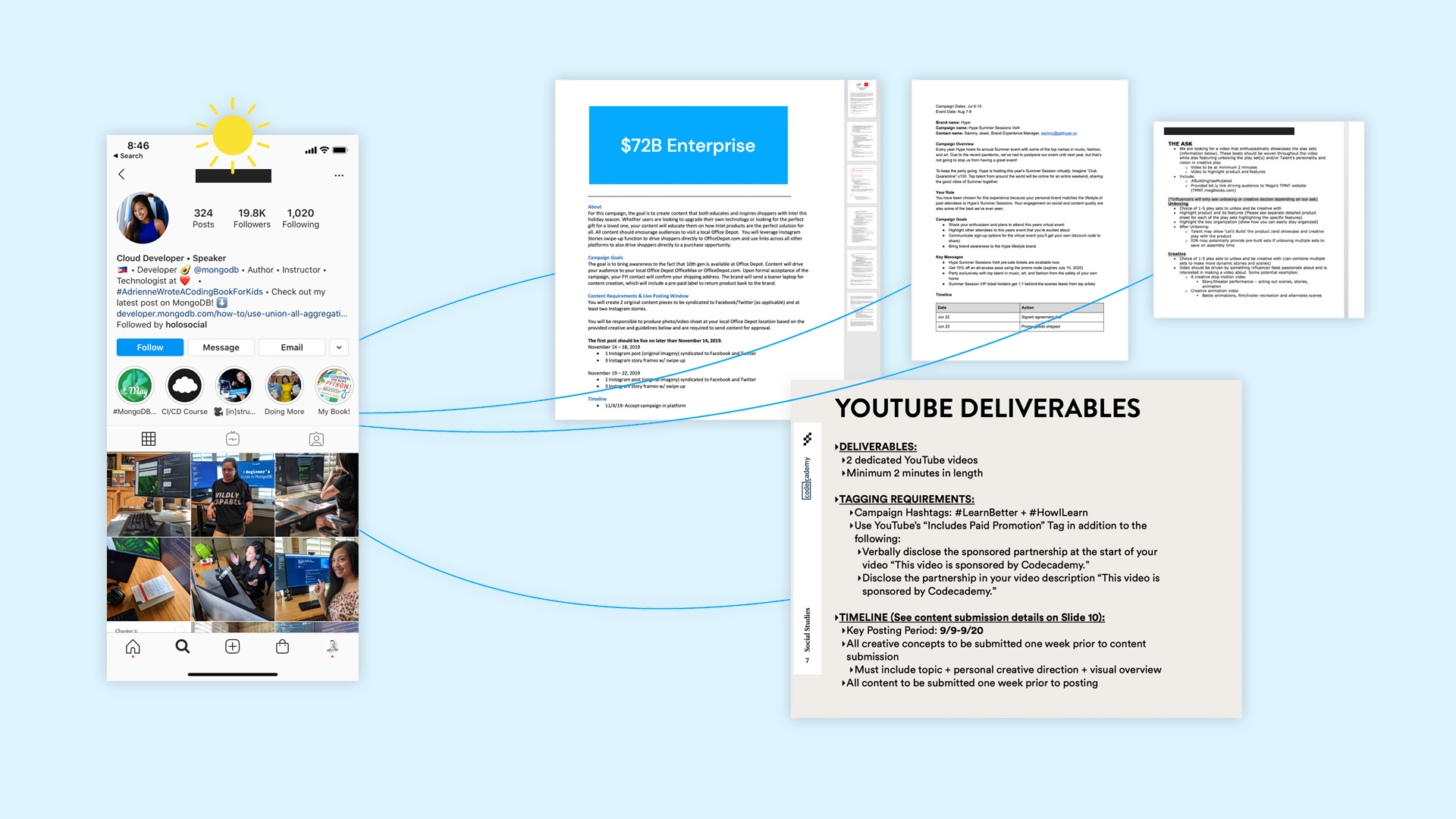

Getting to the root of the problem
We created a high-level competitive analysis listing any potential competitors we could find. Next, we sent a survey to marketers working with influencers, asking them about their most significant challenges related to communicating campaigns. Then, we followed with a moderated card sort to better understand the mental models of influencer marketers. After this initial research, we had a better impression of the problem space and target audience.
Core Problem: Influencer marketers don’t have a standard for creating, delivering, or managing briefs at scale.
Marketer Pain
- Communicating requirements clearly
- Disorganized influencer management
- Managing multi-influencer campaigns
- Low quality content
Influencer Pain
- Lost in translation with wall of text
- All briefs differ based on sender
- Not easily accessible on mobile
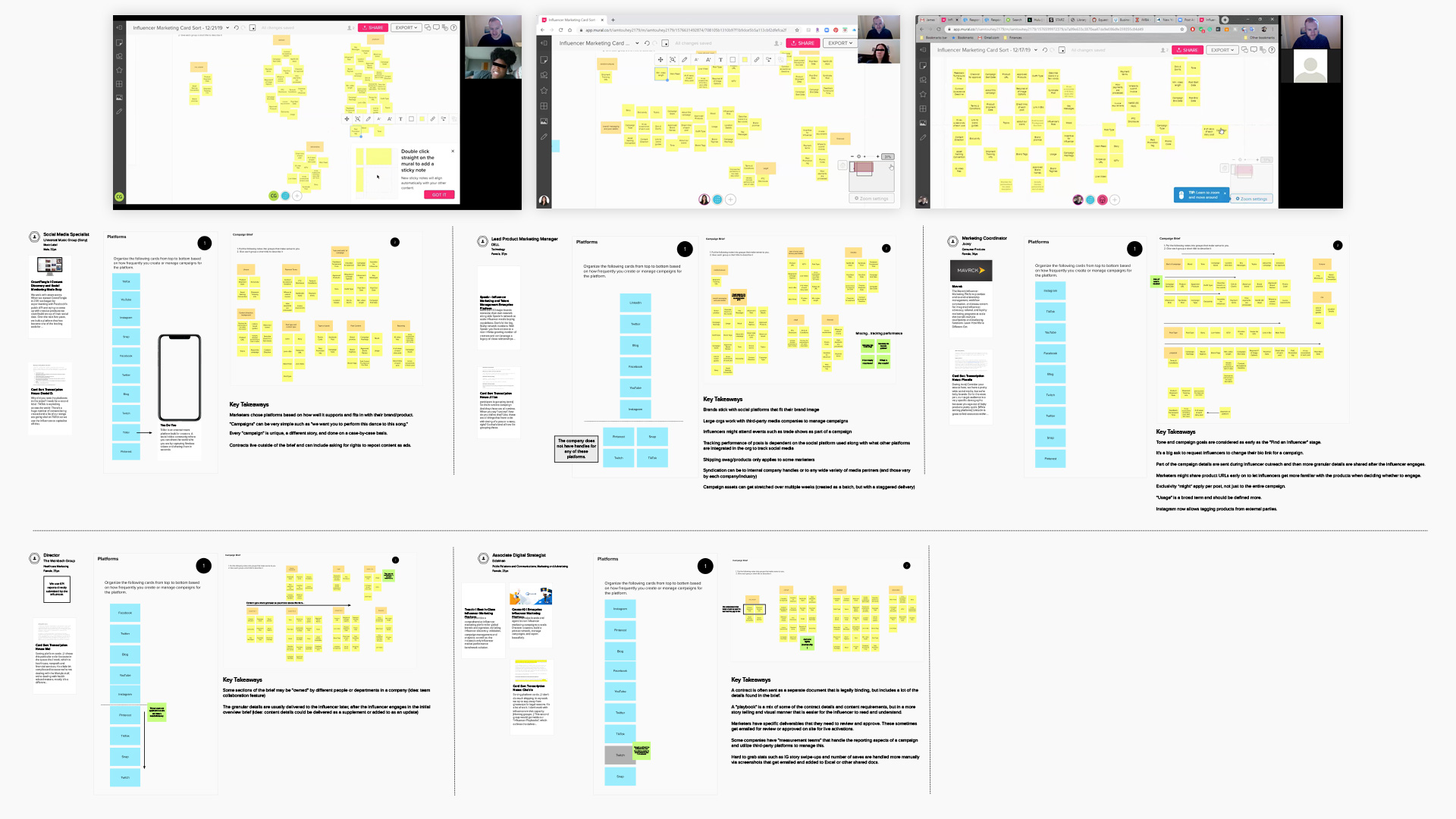

Exploring the solution
Working backward from the idea of a digital influencer brief builder, we began outlining what an end-to-end solution might look like. Once we had a general idea of the user-flow, we began creating mid-fi screens for critical sections of the application and set up a clickable prototype using InVision.
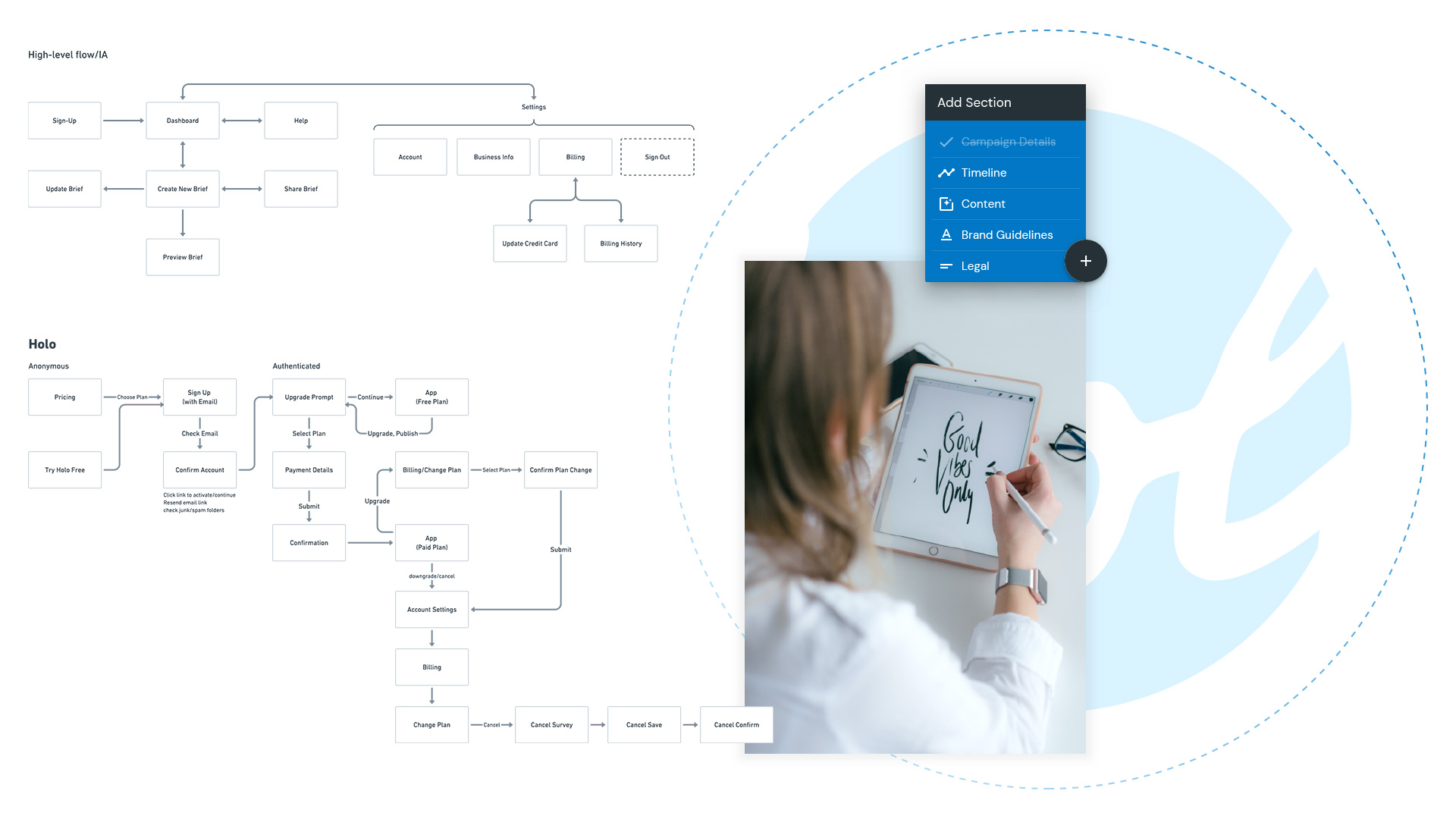

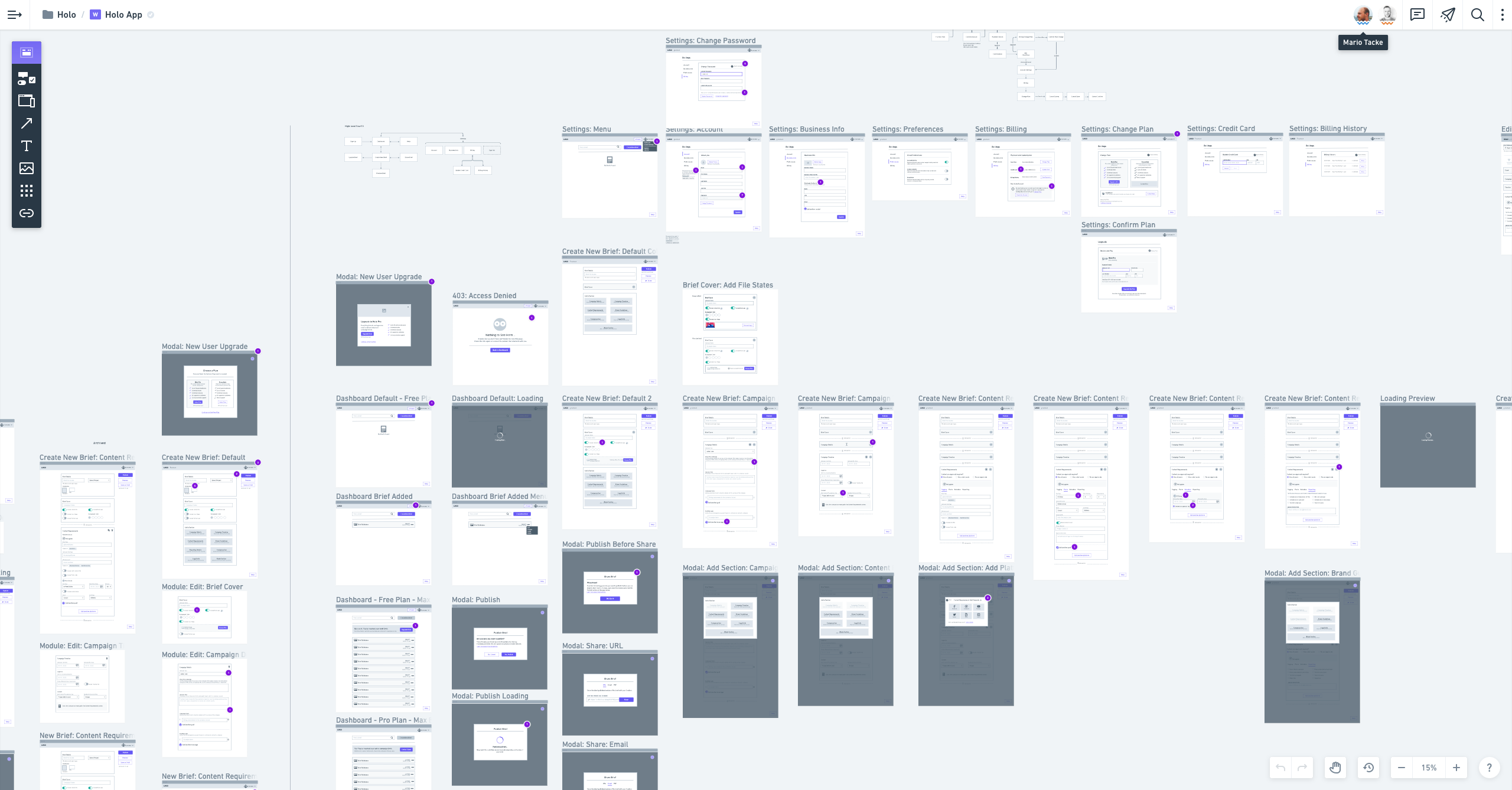

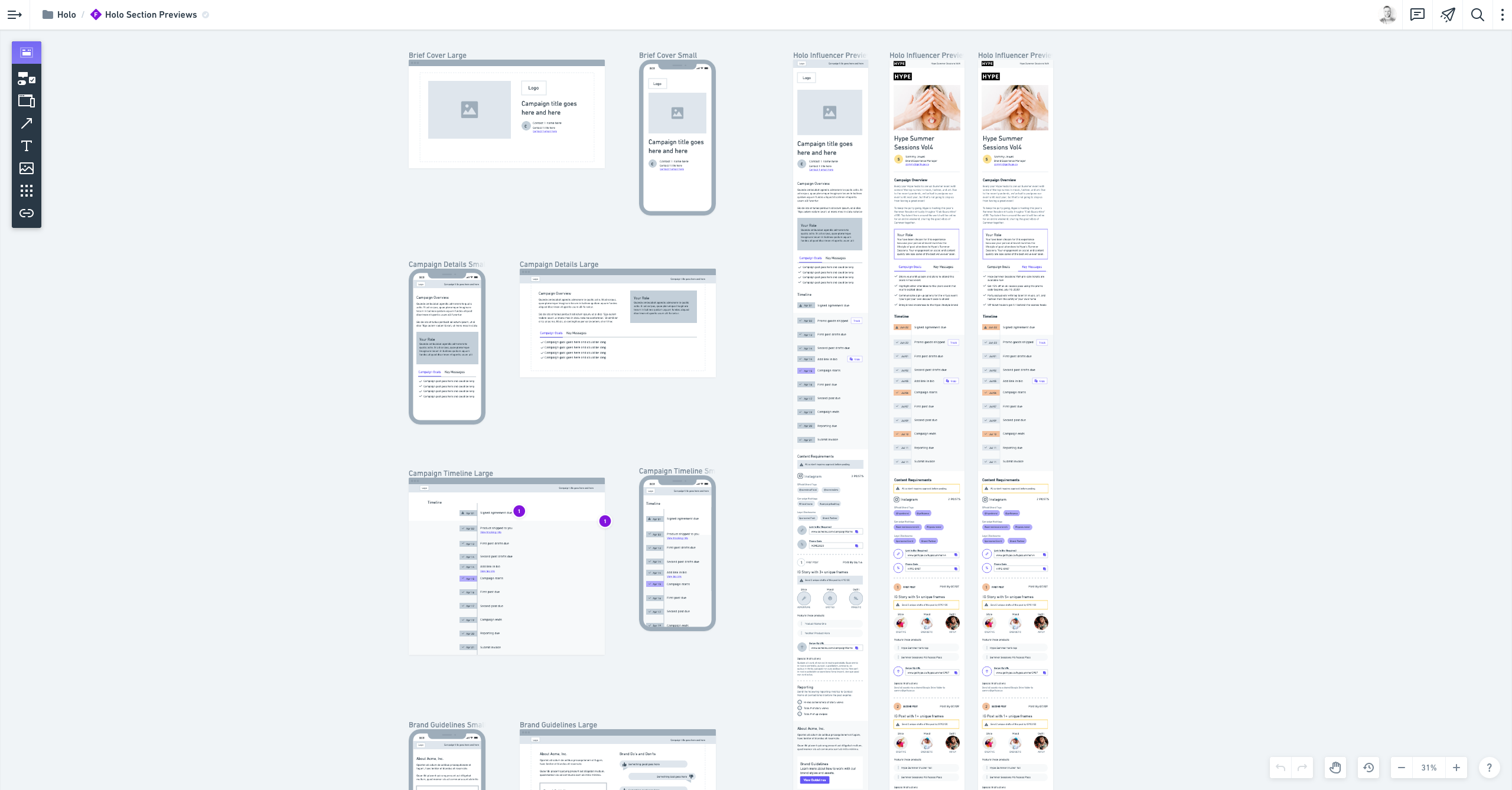

Learning from early prototypes
We set up an unmoderated usability study with five social marketers utilizing the prototype. After synthesizing the results together, we had some key takeaways to continue iterating on the app.
Pros
- The simplicity
- Field hints
- Real-time visual preview
- Sharing features
Cons
- Too much information (dense)
- Some copy and fields were not exact
- Publishing flow was not intuitive


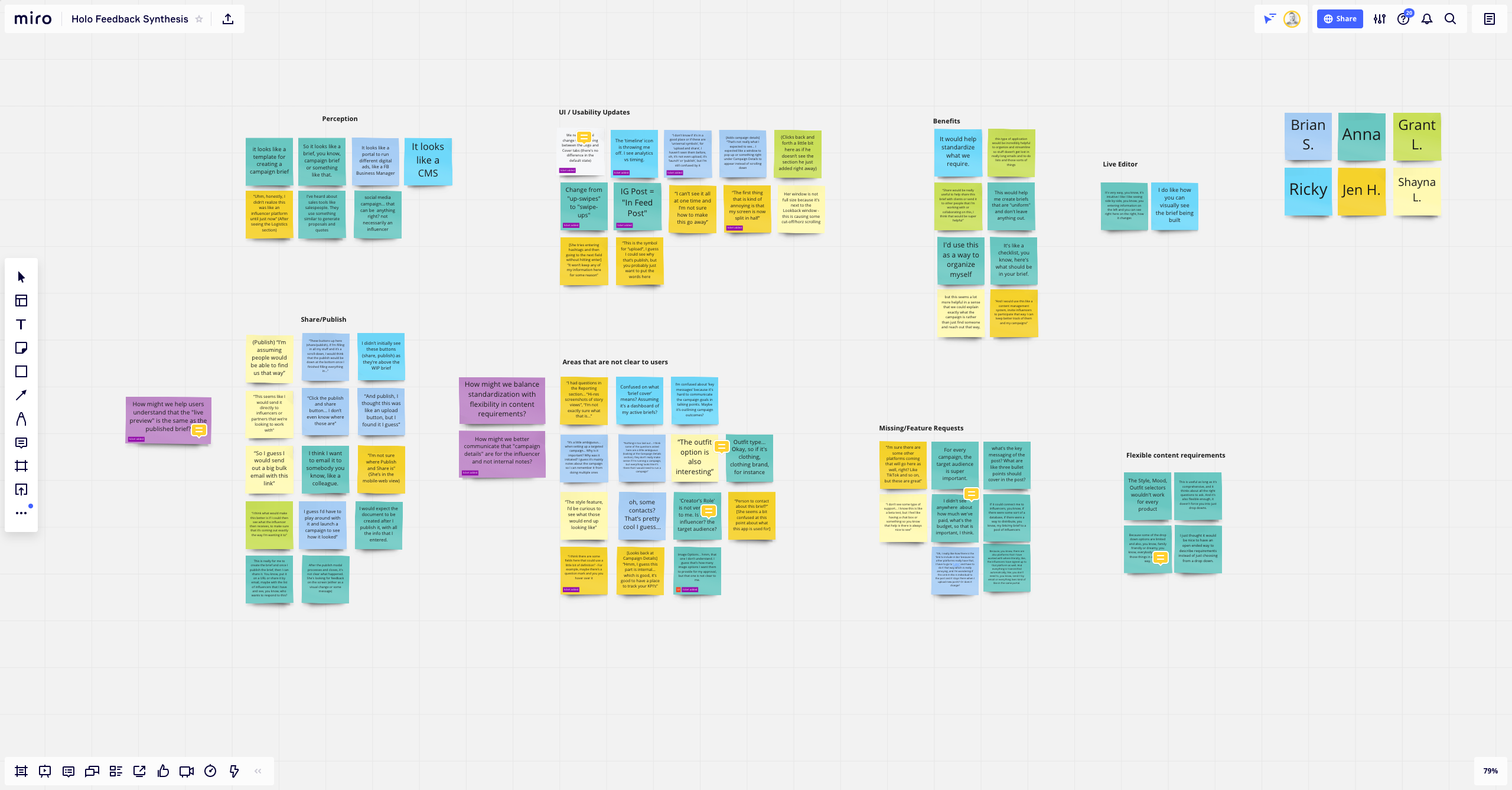

Testing the influencer POV
We created another unmoderated usability study focused on the creator view (what influencers would see.) Capturing feedback directly from influencers was critical in informing how the app should function for marketers. Overall the reactions were positive, but we learned that the amount of information was still too overwhelming, and the app did not communicate compensation details adequately.
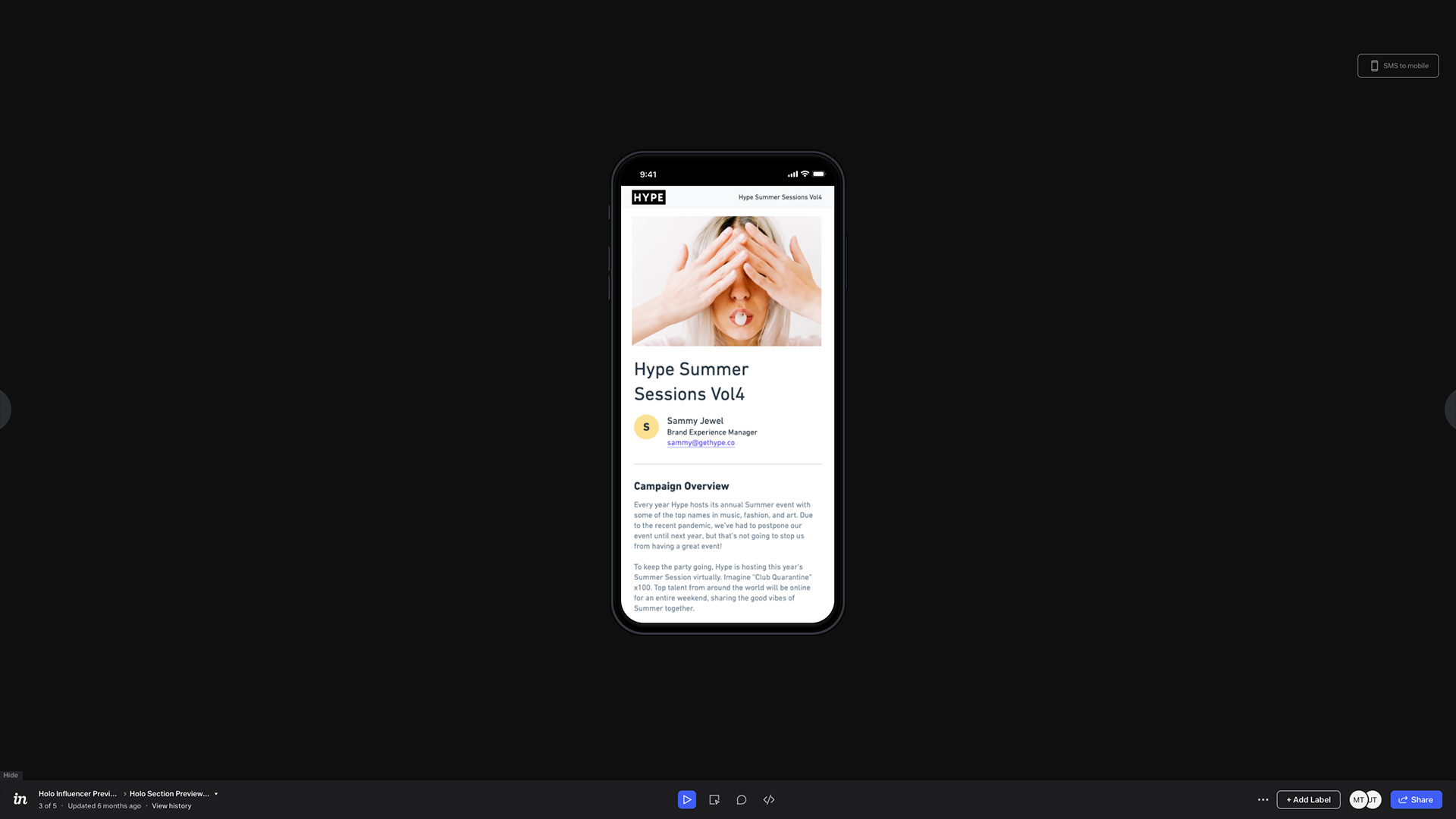

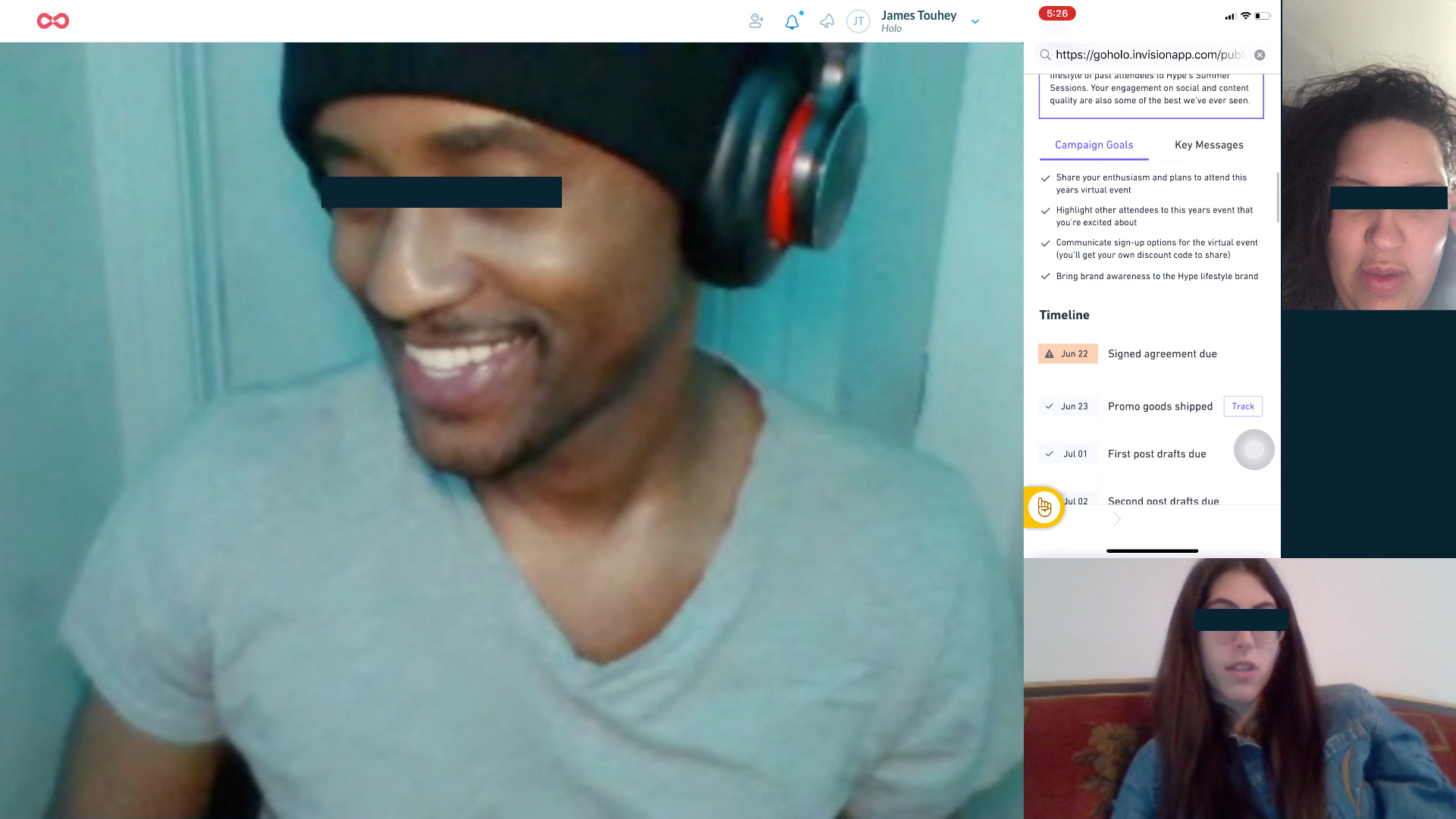

Refining visuals
I worked back and forth across screens for the app while standing up a website to promote the product. This enabled me to refine the visual language we would use for both continuously.
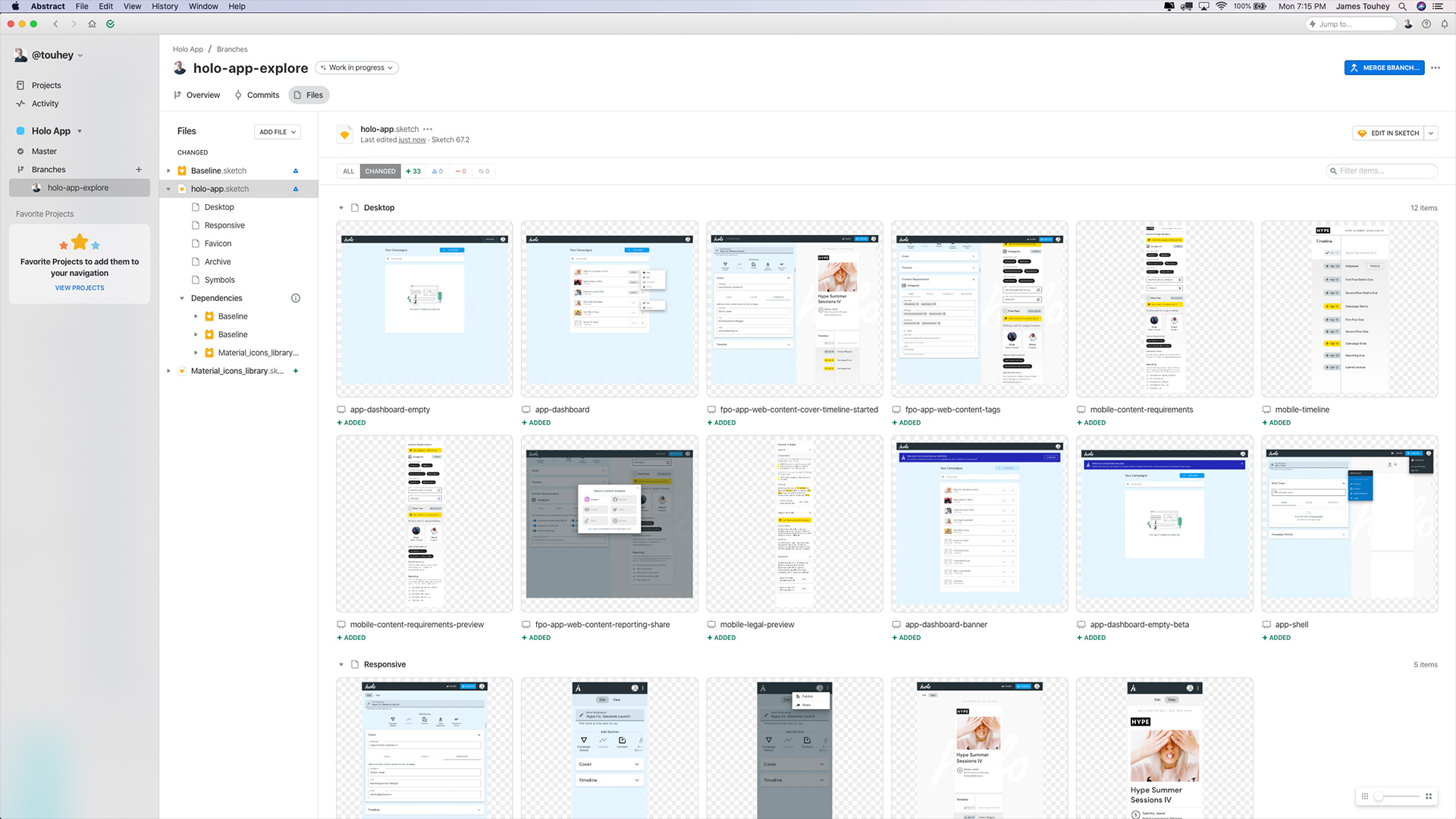

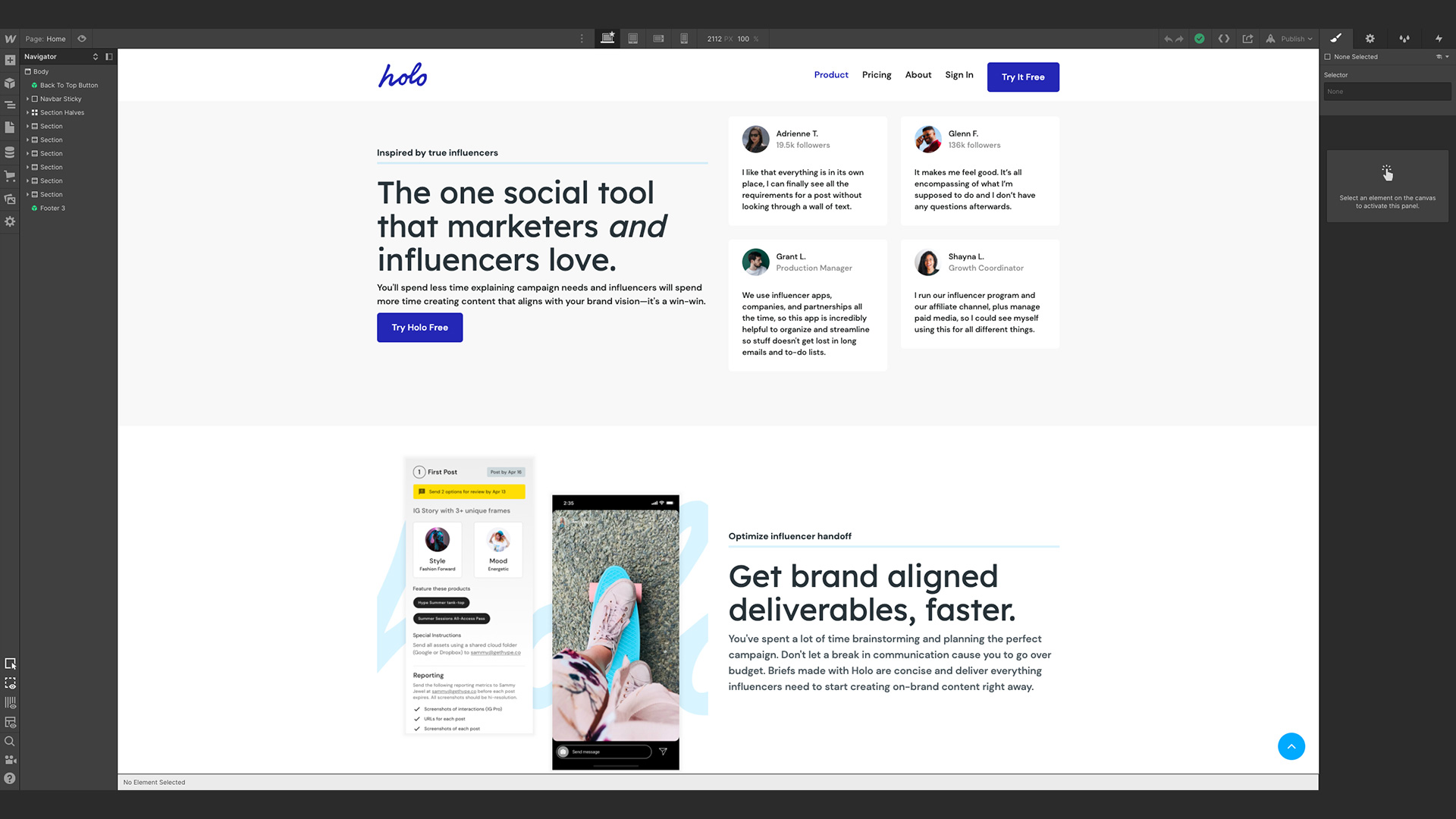

A modular, streamlined brief builder
The final solution we launched enabled social marketers to create comprehensive marketing briefs for Instagram-focused influencer campaigns. Marketers can select from modular components and build their briefs with as little or as much information as they want.
The side-by-side UI allows marketers to see the brief come to life in real-time as they create it. The left side features the editor, while the right shows a mobile-first preview of the brief precisely as it will display for the creators. This layout helps marketers understand more complex inputs by associating the corresponding output right in front of their eyes.
An all-in-one creators guide
Another key feature of the application includes generating private share links to be shared with creators as the marketer sees fit. The marketer now has one source of truth: they can continue to refine and republish without making changes to a doc, exporting the difference, and attaching yet another duplicate file, further leading to communication breakdowns.
The influencer receives a friendly preview of the brief on mobile or with a DM on Instagram. Tapping the preview opens a mobile-first campaign brief with highly visual content that you consume at a glance. Knowing the brief would become the companion guide for the influencer when creating content for the campaign, we built in subtle niceties such as tap-to-copy hashtags and brand tags, making it easier for creators to move from brief to post in less time.
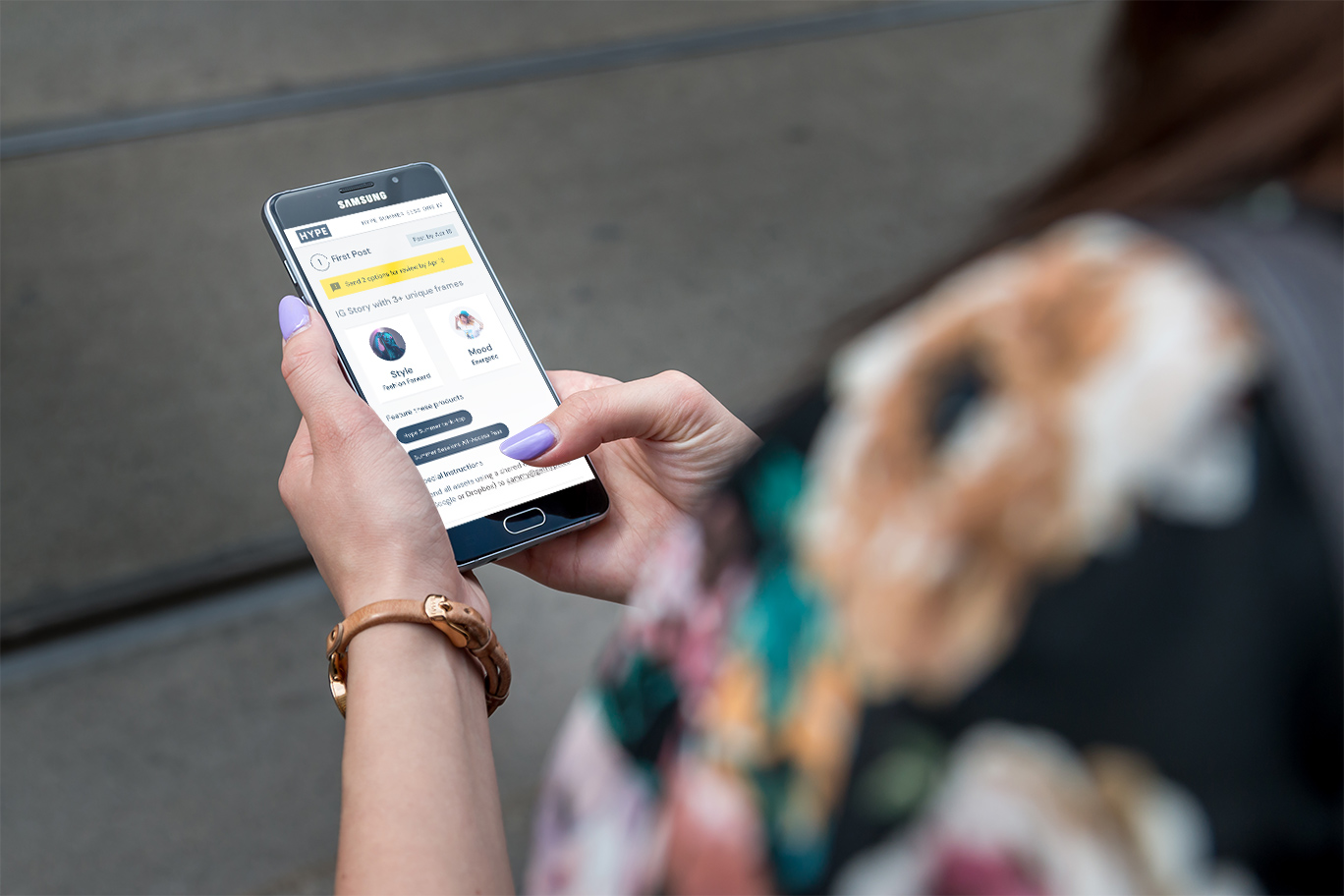

Looking beyond the brief
We announced our beta launch on ProductHunt, where we ended up making the front page on day one. We certainly experienced the "blip factor," still, it enabled us to create enough buzz to produce a pipeline for ongoing demos of the app to prospective customers. About a week after launch, we received a call from a very prominent VC firm inquiring about our product and had a good pitch meeting a week later.
We've since made minor iterations based on user feedback but have realized we haven't found a product-market fit with the current version. We're now well underway with v2.0 behind-the-scenes and look forward to releasing something to the world early next year.
